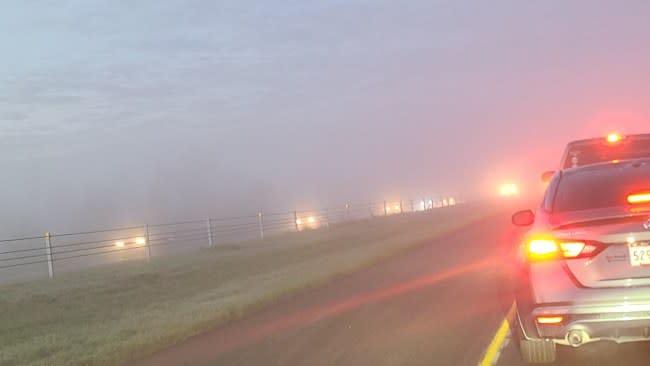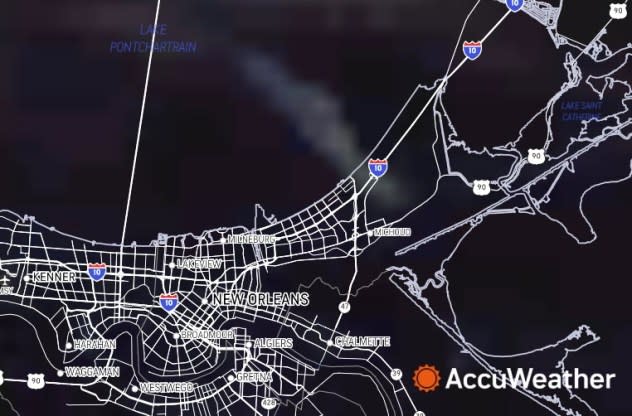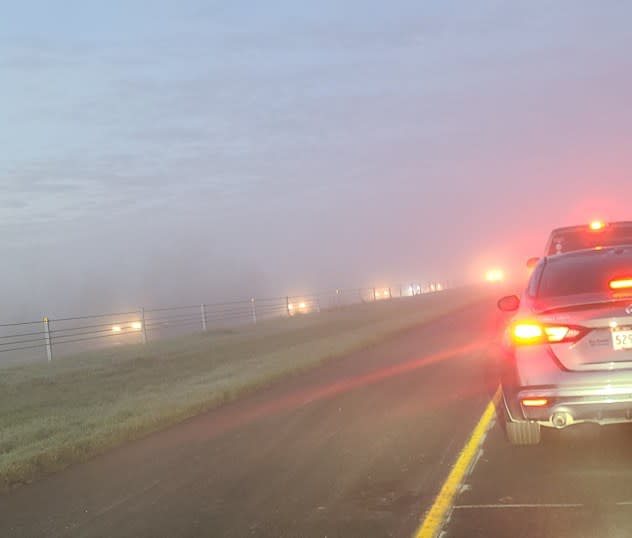Deadly crash along I-10 in New Orleans East occurred amid super fog
A deadly accident occurred along Interstate 10 near Michoud Boulevard in the eastern side of New Orleans, killing one man and injuring others early Tuesday morning, the New Orleans Police Department said. The incident unfolded as smoke and fog engulfed a section of the highway in an event known as super fog.
Interstate 10 was closed in both directions near Michoud Boulevard after the early-morning crash, which happened before 5 a.m. CST Tuesday, according to NOLA.com, a local news site. Several cars were reportedly involved in the crash, with several people being transported to a hospital.
 |
AccuWeather RealVue™ Satellite shows smoke streaming northwestward across I-10 northeast of New Orleans at 7:50 a.m. CST, approximately 3 hours after the accident occurred. |
AccuWeather Senior Meteorologist Matt Benz confirmed that super fog was present at the time of the incident, explaining that it was "a fairly narrow band of dense smoke/fog that caused the poor visibility on I-10 earlier this morning. The combination of smoke from the ongoing fire in Bayou Sauvage/Michoud and fog drifted northwest over I-10."
Benz added that satellite images revealed a plume of smoke that extended to the northwest over Lake Pontchartrain in southern Louisiana.
 |
A view of Interstate 10 near the area of the crash on Nov. 7, 2023. (X/@WhoaNah_ANT) |
"This is the visibility along I-10 near Irish Bayou being driven by the smoke. The smoke is trapped near the surface and will severely reduce the visibility to near zero, making driving extremely hazardous if not impossible until it clears up," the National Weather Service office in New Orleans posted on X, formerly known as Twitter, on Tuesday morning.
In late October, a super fog event due to a combination of marsh fire smoke and fog was present as a deadly pileup crash left eight dead and dozens injured along I-55 in southern Louisiana.
"During the late night and early morning hours, a temperature inversion sets up near the ground and can trap in smoke from nearby fires," AccuWeather Senior Meteorologist Alex Sosnowski explained. A temperature inversion occurs when air temperatures increase with altitude. "When the air is humid enough, as it was Tuesday morning, the air cools and becomes saturated and allows fog to form at the same time that smoke is present."
"When both conditions are present like they were Tuesday morning, and a couple of weeks ago when a deadly pileup crash happened, super fog can develop," Sosnowski said, adding that visibility can drop to near zero in a setup like that.
Have the app? Unlock AccuWeather Alerts™ with Premium+
A dense smoke advisory was issued by the NWS for eastern Orleans and southeastern St. Tammany parishes "due to smoke being trapped near the surface along I-10 around Irish Bayou," the NWS posted on X after 8:20 a.m. EST Tuesday.
The NWS office also noted that patchy dense fog reduced the visibility to 1/4 of a mile or less in some areas, with light to moderate fog causing visibility of 2 to 6 miles.
The New Orleans police department closed some roadways in eastern New Orleans Wednesday morning as a result of dense fog and smoke forming again in the area. These roadways included portions of I-10 and I-510. They were reopened later in the morning.
A dense fog advisory was issued by the NWS Thursday morning for much of southeastern Louisiana, with the possibility that smoke from the nearby wildfire could mix with fog again, creating dangerous traveling conditions. This time the area of greatest concern would be in areas between I-510 and Irish Bayou.
Want next-level safety, ad-free? Unlock advanced, hyperlocal severe weather alerts when you subscribe to Premium+ on the AccuWeather app. AccuWeather Alerts™are prompted by our expert meteorologists who monitor and analyze dangerous weather risks 24/7 to keep you and your family safer.




